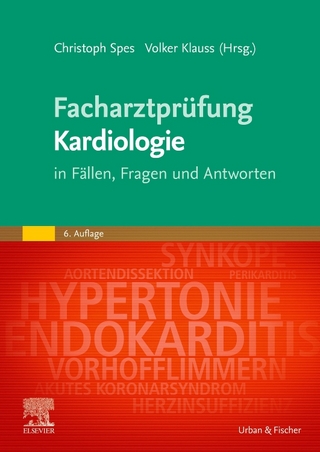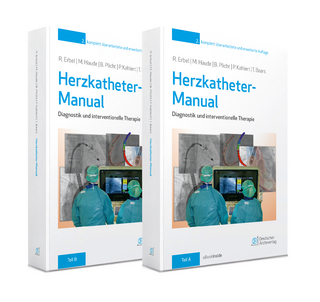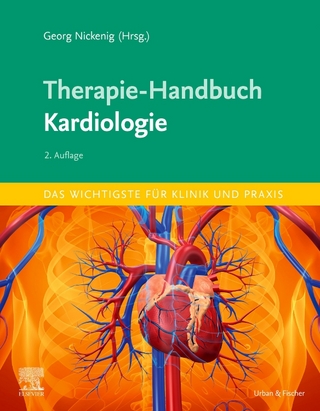
Exercise for Cardiovascular Disease Prevention and Treatment
Springer Verlag, Singapore
978-981-10-4306-2 (ISBN)
Dr. Junjie Xiao is Principal Investigator and Associate Professor at Regeneration and Ageing Lab in Shanghai University, Shanghai, China.
Part I: Overview.- Chapter 1: Physical inactivity and the economic and health burdens due to cardiovascular disease: exercise as medicine (Mark Hamer).- Part II: Cardiac Exercise Physiology.- Chapter 2: Acute and chronic response to exercise in athletes: the “Supernormal Heart (Antonello D’Andrea).- Chapter 3: The effects of exercise on cardiovascular biomarkers: new insights, recent data, and applications (Lin Che).- Chapter 4: Acute and chronic exercise in animal models (Vu Thi Thu).- Part III: Cardiac Cells Adaptations in Exercise.- Chapter 5 Structural, contractile and electrophysiological adaptations of cardiomyocytes to chronic exercise (Krzesiak A).- Chapter 6: Formation of new cardiomyocytes in exercise (Liang Shen).- Chapter 7: Physical exercise can spur beneficial neoangiogenesis and microvasculature remodeling within the heart - our salvation? (Michal Miko).- Chapter 8 The non-cardiomyocyte cells of heart. their possible roles in exercise-based cardiac regeneration, reparation and remodeling (Ivan Varga).- Part IV: Exercise benefits the Heart: Basic Science Evidence.- Chapter 9: Myocardial infarction and exercise training: evidence from basic science (Ivana Cinthya Moraes-Silva).- Chapter 10: Cardiac ischemia/reperfusion injury (Juliana Pereira Borges).- Chapter 11: Experimental evidences supporting the benefits of exercise training in heart failure (Marcelo H. A. Ichige).- Chapter 12: Exercise amaliorates metabolic disturbances and oxidative stress in diabetic cardiomyopathy: possible underlying mechanisms (Ayman M. Mahmoud).- Chapter 13: Cardiac aging – benefits of exercise, Nrf2 activation and antioxidant signaling (Madhusudhanan Narasimhan).- Chapter 14: Cardiac fibrosis:the beneficial effects of exercise in cardiac fibrosis (Jan Kyselovič).- Chapter 15: Physical exercise is a potential “medicine” for atherosclerosis (Jian Yang).- Chapter 16: Experimental evidences supporting training-induced benefits in spontaneously hypertensive rats (GustavoS. Masson).- Chapter 17: Exercise training in pulmonary hypertension and right heart failure: insights from pre-clinical studies (Daniel Moreira-Gonçalves).- Part V: Exercise benefits the Heart: Clinical Evidence.- Chapter 18: Coronary heart disease (Lei Wang).- Chapter 19: Exercise exerts its beneficial effects on acute coronary syndrome:clinical evidence (Zhuyuan Liu).- Chapter 20: Exercise-based rehabilitation for heart failure:clinical evidence (Rongjing Ding).- Chapter 21: The benefits of exercise training on aerobic capacity in patients with Heart Failure and Preserved Ejection Fraction (Danilo Marcelo Leite do Prado).- Chapter 22: Hypertension and exercise training: evidence from clinical studies (Ivana Cinthya Moraes-Silva).- Chapter 23: Effects of exercise on arrhythmia (and viceversa): lesson from the Greek mythology (Caterina Lambiase).- Chapter 24: Exercise and congenital heart disease (Junnan Wang).- Chapter 25: The Positive Effects of Exercise in Chemotherapy-related Cardiomyopathy (Cavarretta Elena).- Chapter 26: Clinical evidence of exercise benefits for stroke (Peipei Han).- Chapter 27: Pulmonary hypertension (Abraham Samuel Babu).- Chapter 28: Peripheral vascular disease (Basant Elnady).- Part VI: Molecular Mechanisms.- Chapter 29 Molecular mechanisms (Kate L. Weeks).- Chapter 30: NO Signaling in the cardiovascular system and exercise (Tiago Fernandes).- Chapter 31: C/EBPB-CITED4 in exercised heart (Shengguang Ding).- Chapter 32: MicroRNAs mediate beneficial effects of exercise in heart (Yihua Bei).- Chapter 33: Exercise training and epigenetic regulation: multilevel modification and regulation of gene expression (Ursula Paula Renó Soci).- Chapter 34: Exercise-induced mitochondrial adaptations in addressing heart failure (Jubert Marquez).- Chapter 35: Exosomes mediate the beneficial effects of exercise (Yangxin Li).- Part VII: Exercise Dosing and Prescription.- Chapter 36: Exercise dosing and prescription-Playing it safe: dangers and prescription(Lei Wang).
| Erscheinungsdatum | 10.11.2017 |
|---|---|
| Reihe/Serie | Advances in Experimental Medicine and Biology ; 3003 | Advances in Experimental Medicine and Biology ; 999 |
| Zusatzinfo | 37 Illustrations, color; 7 Illustrations, black and white; VI, 324 p. 44 illus., 37 illus. in color. |
| Verlagsort | Singapore |
| Sprache | englisch |
| Maße | 155 x 235 mm |
| Themenwelt | Medizinische Fachgebiete ► Innere Medizin ► Kardiologie / Angiologie |
| Studium ► 1. Studienabschnitt (Vorklinik) ► Physiologie | |
| Studium ► Querschnittsbereiche ► Prävention / Gesundheitsförderung | |
| Naturwissenschaften ► Biologie | |
| Schlagworte | Beneficial effects of exercise in cardiac • Cardiac aging • Cardiac Cells Adaptations • Cardiac Exercise Physiology • Cardiovascular Diseases • coronary heart disease |
| ISBN-10 | 981-10-4306-X / 981104306X |
| ISBN-13 | 978-981-10-4306-2 / 9789811043062 |
| Zustand | Neuware |
| Informationen gemäß Produktsicherheitsverordnung (GPSR) | |
| Haben Sie eine Frage zum Produkt? |
aus dem Bereich


